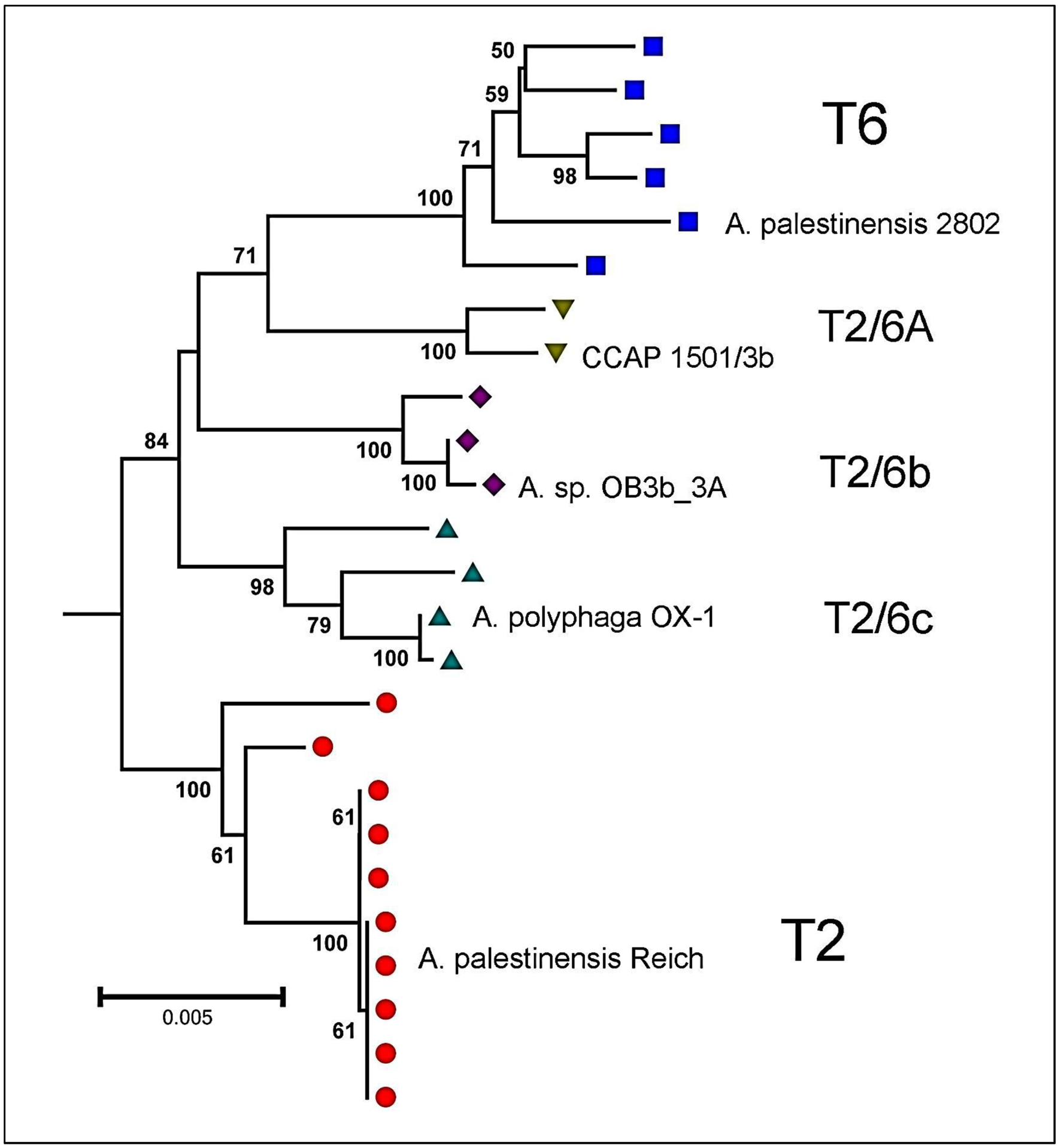(minor revision January 2017, no changes through September 2025)
Isolates of Acanthamoeba that are classified into either the T2 or T6 sequence types provide a further example of the difficulty of applying a strict 5% sequence divergence rule (for the 18S rRNA gene) for the differentiation of sequence types. A number of almost complete sequences fall into identifiable subgroups which have less than 5% or approximately 5% sequence divergence from both the T2 and T6 sequence types that were first defined by our lab. Together with unequivocal T2 or T6 isolates, these intermediates constitute a supertype designated T2/T6. Phylogenetic analysis suggests that three definable intermediate groups exist, each less frequent in nature than either T2 or T6. We thus propose the following sub-type classification within the supertype.
.
Subtypes within the T2/T6 supertype
T2 – A. palestinensis Reich [ATCC 30870] (U07411)
T2/6A – A. polyphaga CCAP 1501/3b [ATCC 30872] (AY026244)
T2/6B – isolate OB3b_3A (AB425945)
T2/6C – A. palestinensis OX-1 [CCAP 1501/3c] (AF019051)
T6 – A. palestinensis 2802 [ATCC 50708] (AF019063)
.
Phylogenetic tree shows relationships among “almost complete” sequences (i.e., deposited sequences of 2000 bases or more) for isolates in the DNA databases as of July 2013.
